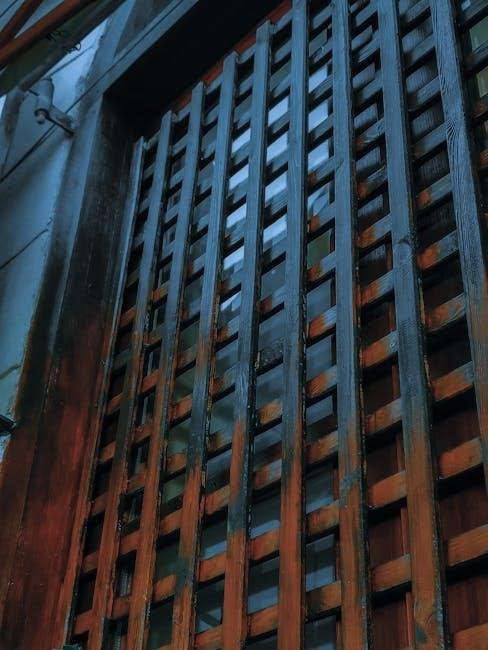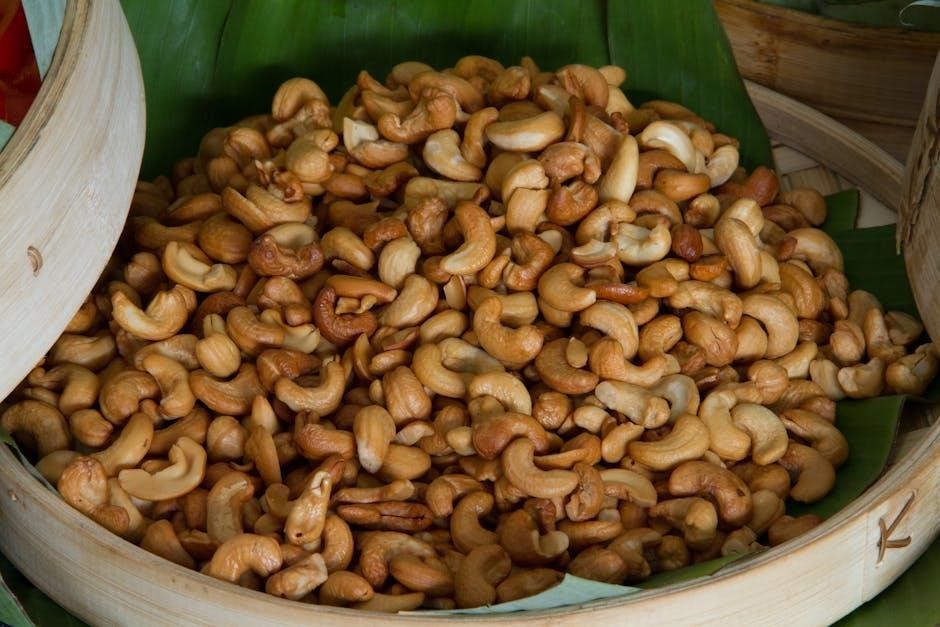Importance of Iron for Toddlers
Iron is essential for toddlers as it supports healthy growth and development. Including iron-rich foods in their diet is crucial to prevent deficiencies. These foods contribute to cognitive function‚ energy levels and overall well-being of children.
Why Iron is Crucial for Development
Iron plays a pivotal role in a toddler’s development‚ primarily due to its involvement in carrying oxygen throughout the body. This oxygen transport is vital for energy production‚ enabling toddlers to be active and engage in daily activities. Furthermore‚ iron supports brain development‚ influencing cognitive abilities and learning. Adequate iron intake during these formative years is essential for building a strong foundation for future intellectual and physical growth. Iron-rich foods help prevent deficiencies that can lead to developmental delays and impaired cognitive function in young children‚ so a balanced diet is a must!
Iron-Rich Food Sources for Toddlers
Ensuring toddlers consume enough iron involves incorporating diverse iron-rich foods into their diet. These sources can be categorized into heme and non-heme iron‚ each offering unique benefits and absorption rates for optimal health.
Heme Iron Sources
Heme iron‚ primarily found in animal products‚ is efficiently absorbed by the body‚ making it a valuable source for toddlers. Lean meats like beef‚ chicken‚ and fish are excellent choices. Beef or chicken liver also provides substantial heme iron‚ although portion sizes should be moderated due to high vitamin A content. Seafood options can further diversify heme iron intake. Incorporating these heme iron sources into a toddler’s diet supports healthy iron levels‚ contributing to their overall growth and development. Remember to prepare these foods in age-appropriate sizes to avoid choking hazards.
Non-Heme Iron Sources
Non-heme iron‚ found in plant-based foods and fortified products‚ offers a valuable alternative for toddlers. Fortified cereals are a convenient and readily available option. Spinach‚ lentils‚ beans‚ and tofu also contribute to non-heme iron intake. While non-heme iron is not as easily absorbed as heme iron‚ its absorption can be enhanced by combining it with vitamin C-rich foods. Including a variety of these non-heme iron sources in a toddler’s diet ensures a well-rounded nutrient intake‚ supporting their healthy development. Remember to consider age-appropriate preparation methods.

Recommended Iron Intake for Toddlers
Toddlers require specific daily amounts of iron to support their rapid growth and development. Meeting these needs through iron-rich foods and‚ if necessary‚ fortified options‚ is critical for preventing deficiencies and ensuring optimal health.
Suggested Daily Amounts
To ensure toddlers receive adequate iron‚ it’s essential to know the suggested daily amounts. Generally‚ toddlers between 1 and 3 years old need approximately 7 milligrams of iron per day. This requirement can be met through a balanced diet rich in iron-rich foods. Include a variety of options like meat‚ fortified cereals‚ beans‚ and spinach. Pay attention to food labels and consult with a pediatrician or registered dietitian for personalized recommendations. Consistently providing the suggested amount supports their growth‚ development‚ and overall health‚ preventing potential iron deficiencies.
Iron Deficiency in Toddlers
Iron deficiency is widespread and can affect toddlers due to inadequate intake. Recognizing the signs and consequences is vital for parents. Ensure sufficient iron-rich foods are included in their diets.
Consequences of Iron Deficiency
Iron deficiency in toddlers can lead to anemia‚ impacting their overall health. Cognitive abilities may be impaired‚ and the development of the nervous system can be incomplete. Including iron-rich foods is crucial to prevent these issues; This deficiency results primarily from insufficient iron intake from food‚ especially given the high demands of rapid growth. Early introduction of solids‚ with a focus on iron‚ is vital. Ensuring toddlers receive adequate iron supports their healthy development and prevents long-term health problems.
Symptoms of Iron Deficiency Anemia
Iron deficiency anemia in toddlers presents various noticeable symptoms. These may include fatigue and weakness‚ impacting their activity levels. Pale skin is another common indicator‚ reflecting reduced red blood cell production. Irritability and behavioral changes might also be observed. Poor appetite and slowed growth are additional signs to watch for. If a toddler exhibits these symptoms‚ it’s essential to consult a healthcare professional. Early detection and intervention‚ through iron-rich foods and supplements if needed‚ are crucial to address the deficiency and support the child’s healthy development and overall well-being.

Tips for Increasing Iron Absorption
To increase iron absorption in toddlers‚ pair iron-rich foods with vitamin C sources. This combination enhances the body’s ability to utilize iron effectively. Avoid certain foods that hinder iron uptake for optimal health.
Combining Iron-Rich Foods with Vitamin C
To maximize iron absorption in toddlers‚ strategically combine iron-rich foods with those high in vitamin C. Vitamin C significantly enhances the body’s ability to absorb non-heme iron found in plant-based sources. Examples include pairing fortified cereals with strawberries or beans with bell peppers.
Incorporating fruits and vegetables high in vitamin C alongside meals containing iron can improve iron levels. This simple dietary adjustment supports healthy growth and prevents iron deficiency. Ensuring adequate iron uptake contributes to a toddler’s overall well-being.
Foods to Avoid That Inhibit Iron Absorption
Certain foods can hinder iron absorption in toddlers. Limiting these foods can help optimize iron uptake. It is important to be aware of these foods to prevent deficiencies.
Cow’s Milk and Iron Absorption
Introducing cow’s milk too early or in excessive amounts can negatively impact iron absorption in toddlers. Cow’s milk contains calcium‚ which can interfere with iron uptake in the body. It’s best to limit cow’s milk intake to around 16-24 ounces per day for toddlers. Breast milk or formula should be the primary source of nutrition for babies under one year. Ensure your child consumes iron-rich foods alongside cow’s milk. Overconsumption of cow’s milk can also lead to a feeling of fullness‚ reducing the appetite for iron-rich foods‚ potentially leading to iron deficiency anemia.
Iron-Fortified Foods for Toddlers
Iron-fortified foods are designed to boost iron intake in toddlers. These products‚ like cereals‚ provide a reliable source of this essential mineral. They help ensure toddlers meet their daily iron requirements.
Iron-Fortified Cereals
Iron-fortified cereals are a common and convenient way to increase iron intake in toddlers. Many baby cereals are specifically designed to be high in iron‚ making them an excellent choice for introducing solid foods. These cereals are often easy to digest and can be mixed with breast milk‚ formula‚ or water to create a smooth consistency suitable for young babies. Offering iron-fortified cereals helps bridge the gap when toddlers might not be eating enough iron-rich foods from other sources‚ ensuring they receive the necessary iron for healthy growth and development.

Addressing Picky Eaters and Iron Intake
Tackling picky eating habits is vital to ensure toddlers get enough iron. Introducing iron-rich foods creatively and patiently helps overcome resistance. Consistent exposure and positive reinforcement can improve a toddler’s diet and iron intake;
Strategies for Introducing Iron-Rich Foods
To introduce iron-rich foods to toddlers‚ start with small portions and offer them frequently. Combine these foods with familiar favorites to increase acceptance. Puree or mash textures can also make it easier for younger children to consume. Create a positive mealtime environment to encourage trying new foods. Pairing iron-rich foods with vitamin C-rich options enhances absorption.
Consider involving toddlers in meal preparation to spark their interest. Offer a variety of iron sources to cater to different preferences. Be patient and persistent‚ as it may take multiple attempts for a child to accept a new food. Ultimately‚ focus on making meal times enjoyable.

Safety Considerations
When feeding toddlers‚ ensure foods are age-appropriate to prevent choking. Cut foods into small‚ manageable pieces. Avoid offering foods that are common choking hazards. Always supervise toddlers during meal times to ensure their safety.
Choking Hazards and Age-Appropriate Foods
Prioritize your toddler’s safety by being mindful of potential choking hazards. Certain foods‚ such as whole grapes‚ nuts‚ and popcorn‚ pose a significant risk for young children. Always modify these foods by cutting them into smaller‚ safer pieces or avoiding them altogether. Ensure that all meals and snacks are prepared with age-appropriateness in mind‚ promoting safe eating habits. Supervise meal times closely‚ encouraging slow and careful chewing. Pay attention to your child’s eating pace. This will prevent accidents and support healthy development. Small‚ soft pieces are best.
